Dugong Facts - Animals of the Ocean
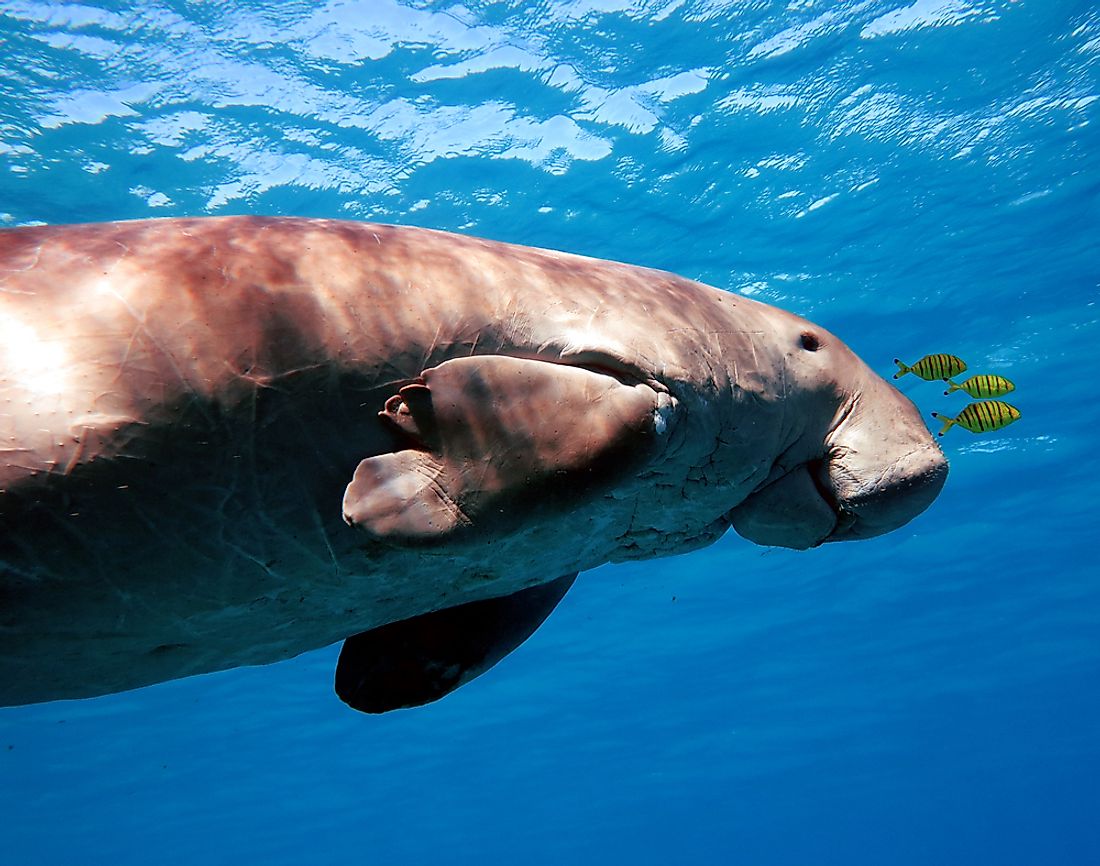
A dugong is a large sea mammal who can be found in warm waters. Although similar in appearance to manatees, the two differ in appearance. Not only do dugongs have tails with pointed projections that are more similar to a whale than that of a manatee, but they also differ in the appearance of their nose and teeth. Below is an outline of some of the key facts about dugongs.
4. Physical Description
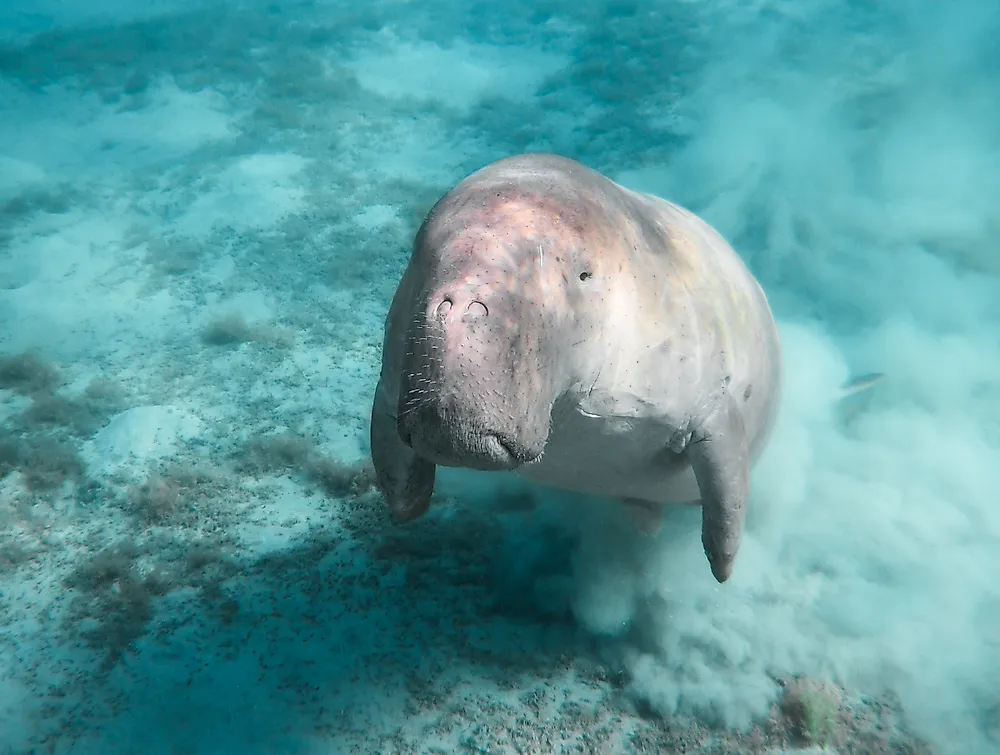
The dugong is a large sea mammal who are sometimes referred to as "sea cows" due to the large amount of seagrass they consume. They are members of the same species as the more widely-known manatee, although its closest modern relative is the Steller's sea cow which became extinct in the 18th century.
The dugong has a curved body with forelimbs that act as flippers. Its tail, which is almost dolphin or whale-like, distinguishes the dugong from manatees. Dugongs are also distinguishable by their unique snouts. Its skin is smooth and ranges from cream to grey in colour, depending on the age of the dugong. Dugongs have very large lungs with help them live happily in their saltwater environments. Fully grown dugongs can weigh up to 800 lbs.
3. Behavior
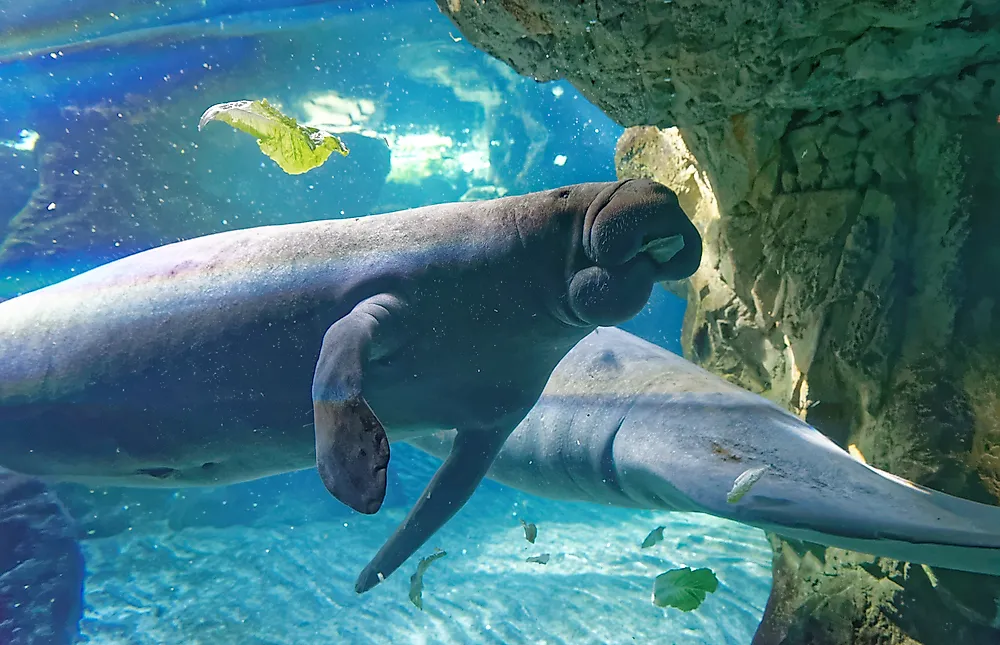
The dugong is known for their preference of small groups, although large groups of the animal have been reported before. Nevertheless, the dugong is a social species. Eating is their activity of choice. Dugongs use their tails to assist in swimming, and they can reach a speed of 10 kilometers per hour. They use this swimming speed to transport themselves between the deeper waters in which they coast and the shallow waters where they feed. They have been reported to cover the occasional vast distance. However, it is difficult for humans to study dugong behavior as they are shy and cautious animals.
2. Habitat and Range
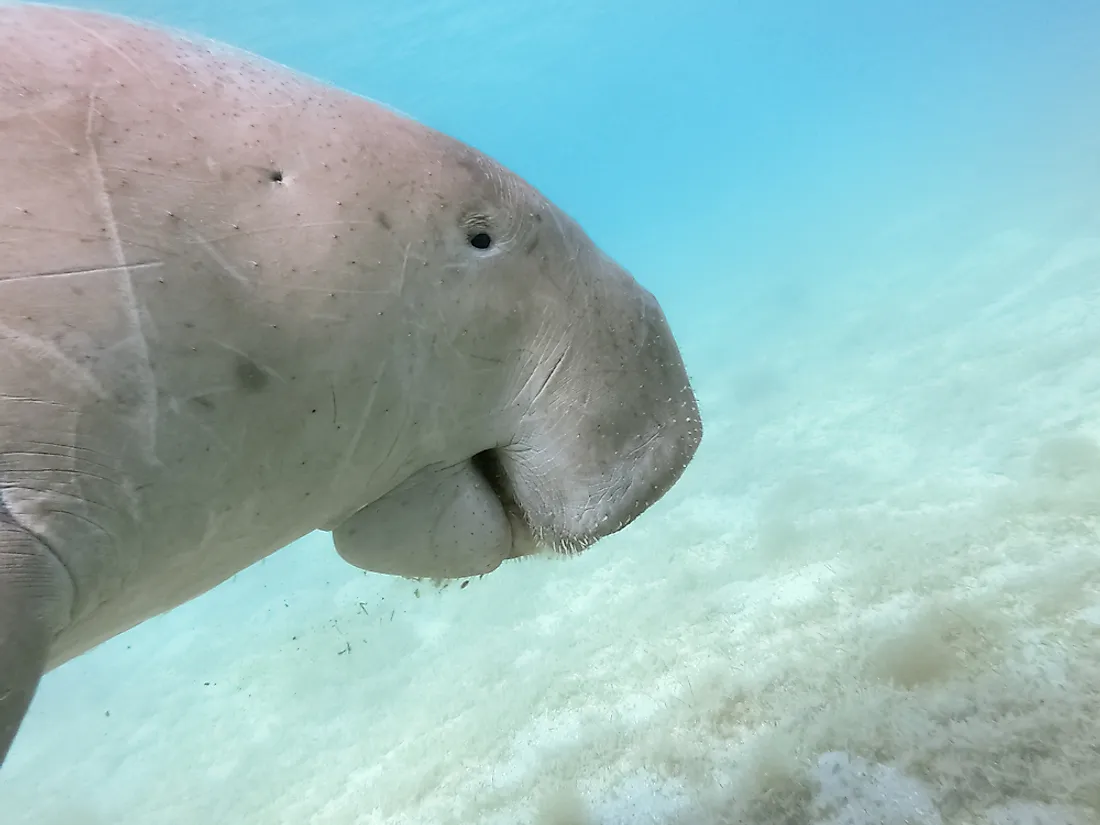
The dugong can be found in the waters of around 40 territories throughout the Indian and South Pacific oceans, including within the boundaries of countries in Australia, Asia, Africa, and the Middle East. However, its exact population numbers are hard to track. It is listed by the IUCN as "vulnerable". In an effort to combat this, some actions have been taken to protect dugongs such as a legal protection status as well as a ban (or limit) on any products that are derived from the animal.
1. Diet
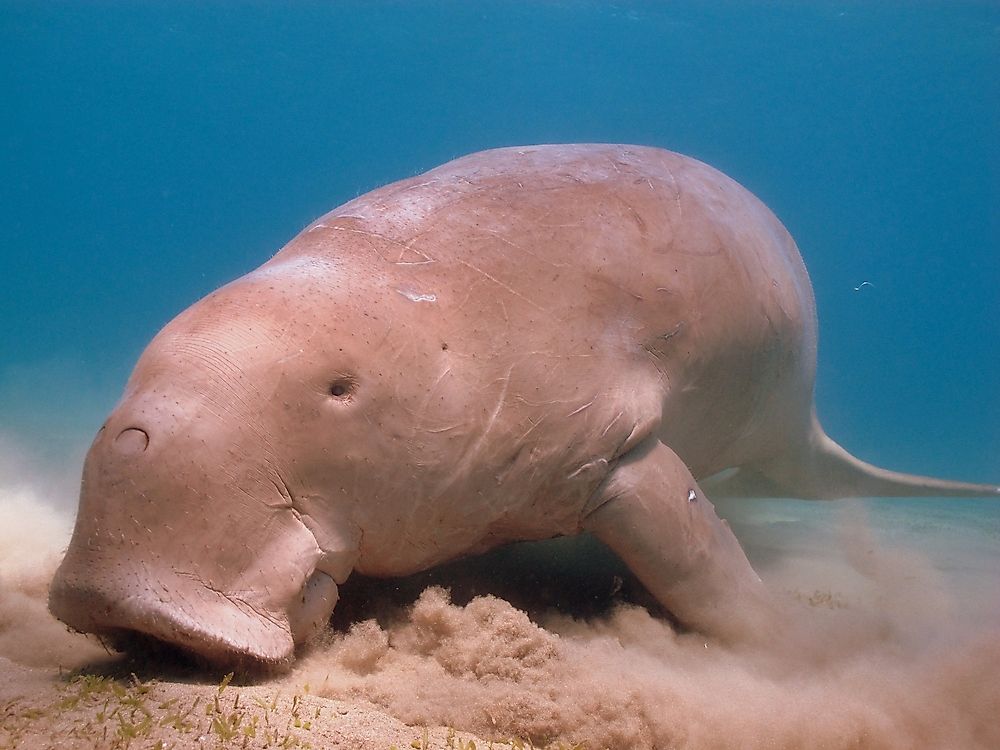
The dugong is the only marine mammal that is a strict herbivore. The diet of the dugong primarily consists of seagrass, which is mostly found in the meadows of shallow water areas. The dugong spends much of its time grazing, eating up to 70 pounds of seagrass a day.
One example of human activity that has an adverse affect on the dugong species is the presence of sand and silt in the ocean, which covers beds of seagrass. It happens due to the construction of human dwellings in close proximity to the seas in which dugongs live.











